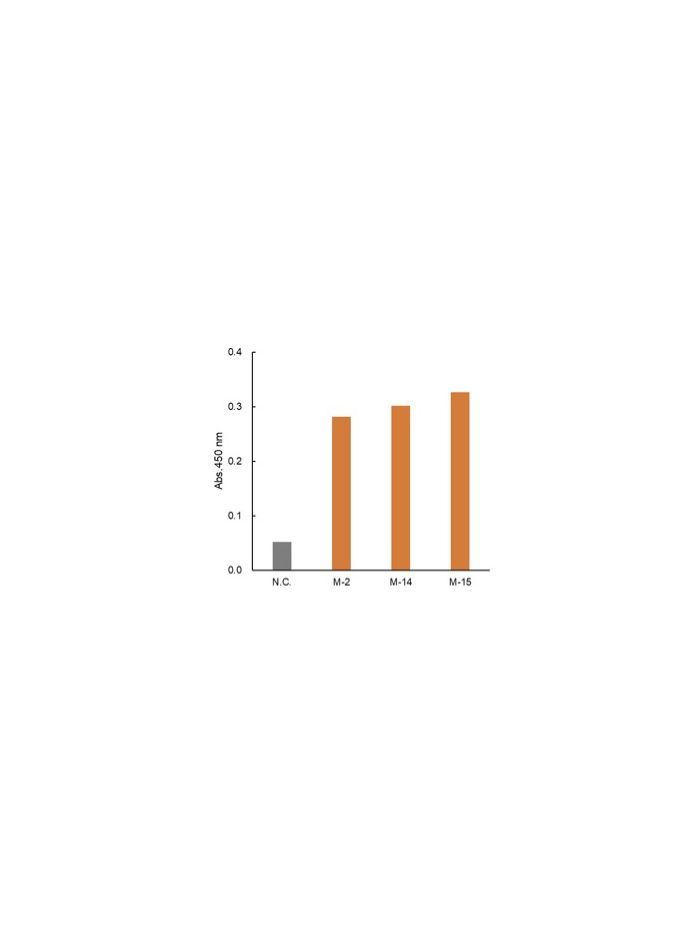CTX-M (C11) rabbit mAb
From
$210.00
In stock
Only %1 left
SKU
2626
CTX-M-type enzymes are a group of class A extended-spectrum beta-lactamases (ESBLs) that are rapidly spreading among Entrobacteriaeae worldwide (1). CTX-M-type β-lactamases, originally found in Kluyvera spp., shows hydrolysis activity on ceflaxime and its gene spreads via plasmid. Since their discovery in Europe in the early 1980s, they have spread worldwide and are now endemic in Enterobacterales isolated from both hospital-associated and community-acquired infections, including urinary tract infections and bloodstream infections (2). Especially, poor sanitary conditions are more likely to result in the transfer of CTX-M-type enzymes in the Enterobacterales between animals, humans, and living environment. As a result, they are a global public health concern. In the past, TEM- and SHV-type ESBLs were the predominant families of ESBLs. CTX-M-type enzymes have increased since 2000, and today the most commonly found ESBL type with the CTX-M-15 variant dominating worldwide, followed in prevalence CTX-M-14, and CTX-M-27 is emerging in certain parts of the world (3). Presently, more than 50 allelic variants are known, clustered in six sub-lineages or groups.
| Applications | ELISA |
|---|---|
| Clone | C11 |
| Format | Unconjugated |
| Validated Reactivity | E. coli Klebsiella pneumoniae |
| Cross Reactivity | Almost all CTX-M antigen. (CTX-M2, M14, M15) |
| Detection | Anti-Rabbit IgG |
| Clonality | Monoclonal |
| Immunogen | recombinant CTX-M antigen |
| Formulation | 1X PBS, 0.02% NaN3 |
| Isotype | Rabbit IgGk |
| Preparation | Protein A |
| Recommended Usage | ELISA 1:1000 Western Blotting 1:1000 Flow not recommended |
| Storage | -20ºC |
| Uniprot ID | Q8KSA6 |
| References | 1. Castanheira M et al., 2021, JAC Antimicrob Resis 3(3): diab092. 2. Bonet R, 2004, Antimicrob Agents Chemotherm 48:1-14. 3. Bevan ER., et al., 2017, J Antimicrob Chemother, 72:2145-2155. 4. Nishida, S et al., 2021, Int J Biol Macromol. 185 317-323. |
Write Your Own Review

